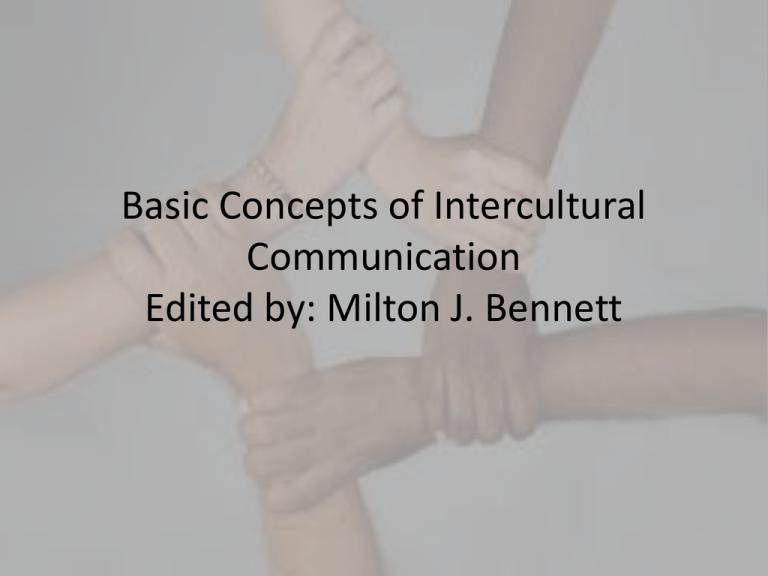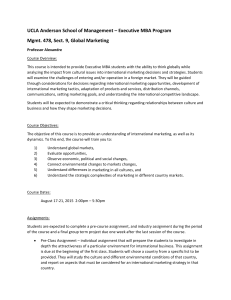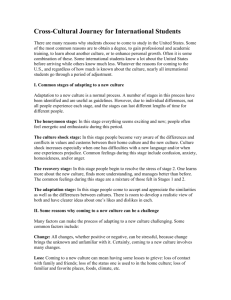Basic Concepts of Intercultural Communication Edited by: Milton J
advertisement

Basic Concepts of Intercultural Communication Edited by: Milton J. Bennett How do people adapt to other cultures? Assimilation adaptation What is the meaning of assimilation? the process of becoming an accepted part of a country or group Longman online dictionary What must you do to become accepted? Change your customs? Change your behaviour? Change your values? To what extent? What is adaptation? the process of changing something to make it suitable for a new situation Longman online dictionary How much change is suitable? To assimilate you need to substitute what you have with what is around you To adapt you need to change those things you think are necessary and add the rest to your system. Assimilation is substitutive Adaptation is additive Which one do you find better? Why? Cultural sensitivity Stages 1. Denial 1. No perception of differences 2. Use stereotyping; i.e. Africans, Women 3. ‘us’ versus ‘them’ 4. Discriminate against the ‘other’ 2. Defense -Aware of cultural diversity but consider it as negative. -Feel threatened by the outside world, and want to protect their ethnic identity. 1. ‘us’: positive ‘them’: negative. 2. Our culture the best in the world 3. Opposite extreme : my culture bad, new culture the best 4. In extreme cases, this attitude might encourage violence against ethnic minorities. 3. Minimization 1. Minimize differences; 2.Emphasize similarities among people 3.Only look at visible differences 4.Have more knowledge about other cultures 5.But in key questions : My culture better 4. Acceptance 1. Recognize and explore cultural differences 2.People consider themselves as a cultural being 3. Tolerant when facing something unknown 4. No black and white/wrong or right answer to questions. 5. But, tolerance is not full acceptance of other people’s culture. 5. Adaptation 1. Not only understand the other culture but also can put yourself in place of others. See the world from the perspective of another culture. 2. They are able to change their behaviour to fit into a new environment. 3. One person can become ‘bicultural’ or ‘multicultural’. 6. Integration 1. People have understood another culture(s) so well that they can solve the problems which happen because of such differences. 2. They decide about their own identity, which is developed based on parts of various cultures. 3. They have the ability to evaluate various elements in a culture more objectively. stages of becoming a ‘multi culturalist’ Denial defense Ethnocentric stages minimization acceptance adaptation integration Ethnorelative stages











